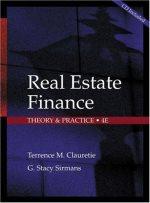
Question 2 Not yet answered Marked out of 1.00 Flag question 2012 Review of pre-consolidation equity method (controlling investment in affiliate, fair value differs from book value) Assume an investee has the following financial statement information for the three years ending December 31, 2013: (At December 31) 2011 2013 Current assets $207,000 $277,700 $285,470 Tangible fixed assets 563,000 574,300 661,730 Intangible assets 50,000 45,000 40,000 Total assets $820,000 $897,000 $987,200 Current liabilities $100,000 $110,000 $121,000 Noncurrent liabilities 220,000 242,000 266,200 Common stock 100,000 100,000 100,000 Additional paid-in capital 100,000 100,000 100,000 Retained earnings 300,000 345,000 400,000 Total liabilities and equity $820,000 $897,000 $987,200 (For the year ended December 31) Revenues Expenses Net income Dividends 2011 2012 2013 $850,000 $920,000 $970,000 775,000 840,000 876,000 $75,000 $80,000 $94,000 $25,000 $35,000 $39,000 Assume that on January 1, 2011, an investor company purchased 100% of the outstanding voting common stock of the investee. On the date of the acquisition, the investee's identifiable net assets had fair values that approximated their historical book values. In addition, the acquisition resulted in no goodwill or bargain purchase gain recognized in the consolidated financial statements of the investor company. Assuming that the investor company uses the equity method to account for its investment in the investee, what is the balance in the "investment in investee" account in the investor company's preconsolidation balance sheet on December 31, 2013? $450,000 $500,000 o$600,000 $987,200 Question 2 Not yet answered Marked out of 1.00 Flag question 2012 Review of pre-consolidation equity method (controlling investment in affiliate, fair value differs from book value) Assume an investee has the following financial statement information for the three years ending December 31, 2013: (At December 31) 2011 2013 Current assets $207,000 $277,700 $285,470 Tangible fixed assets 563,000 574,300 661,730 Intangible assets 50,000 45,000 40,000 Total assets $820,000 $897,000 $987,200 Current liabilities $100,000 $110,000 $121,000 Noncurrent liabilities 220,000 242,000 266,200 Common stock 100,000 100,000 100,000 Additional paid-in capital 100,000 100,000 100,000 Retained earnings 300,000 345,000 400,000 Total liabilities and equity $820,000 $897,000 $987,200 (For the year ended December 31) Revenues Expenses Net income Dividends 2011 2012 2013 $850,000 $920,000 $970,000 775,000 840,000 876,000 $75,000 $80,000 $94,000 $25,000 $35,000 $39,000 Assume that on January 1, 2011, an investor company purchased 100% of the outstanding voting common stock of the investee. On the date of the acquisition, the investee's identifiable net assets had fair values that approximated their historical book values. In addition, the acquisition resulted in no goodwill or bargain purchase gain recognized in the consolidated financial statements of the investor company. Assuming that the investor company uses the equity method to account for its investment in the investee, what is the balance in the "investment in investee" account in the investor company's preconsolidation balance sheet on December 31, 2013? $450,000 $500,000 o$600,000 $987,200







